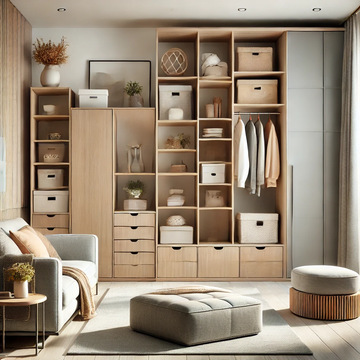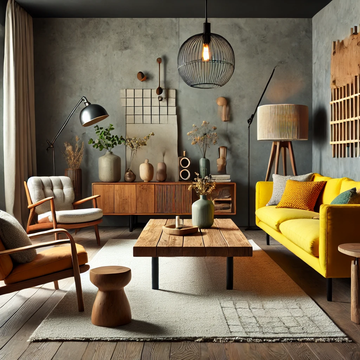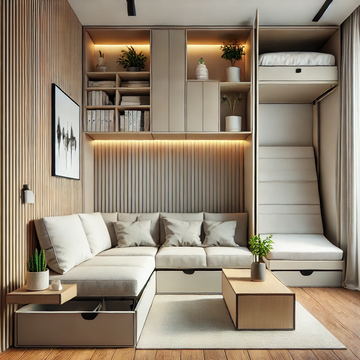Why Having a Dedicated Art Space Matters
Let’s face it—trying to create your masterpiece on the kitchen table, only to clear it away for dinner, is far from ideal. Whether you’re a budding artist or a seasoned pro, having a dedicated art studio at home can make a world of difference. It’s your personal sanctuary, a place where creativity flows without interruption. Imagine having all your materials within arm’s reach, your easel set up just the way you like it, and a space that’s truly your own. It’s not just about convenience; it’s about giving your creativity the space it deserves.
That’s why we’ve put together this guide. Whether you’re working with a spare room, a garage corner, or even a cosy nook in your living room, we’ll help you set up a home art studio that’s both functional and inspiring. Ready to create your perfect space?
Choosing the Right Space
Before you start gathering supplies and furniture, it’s important to find the right spot in your home for your art studio. The space you choose will set the tone for your creative process, so it’s worth considering a few key factors.
Assessing Available Space
First things first, take a look around your home and think about where you could carve out a little artistic haven. A spare room is ideal, but if that’s not an option, don’t worry. A corner of a larger room, a section of the garage, or even an attic can work beautifully. The key is to find a spot that you can claim as your own, where you won’t have to pack up your materials every time you’re done for the day.
Considering Natural Light and Ventilation
Good lighting is essential for any art studio, so look for a space with plenty of natural light. If you’re working with limited daylight, you can always enhance it with artificial lighting (we’ll get to that later). Don’t forget about ventilation, especially if you’re working with paints or other materials that produce fumes. A window you can open or a fan to keep the air circulating will make your studio a much more pleasant place to work.
Privacy and Quiet
Art requires focus, so choose a space where you can work without constant interruptions. If you have a busy household, finding a quiet corner might be challenging, but it’s worth it. The more you can create a distraction-free zone, the easier it will be to lose yourself in your work.
Essential Furniture and Equipment
Now that you’ve found your spot, it’s time to furnish it. The right furniture and equipment can transform a simple space into a fully functional art studio.
Work Surface Options
- Easels: If you’re a painter, an easel is a must. It keeps your canvas at the perfect height and angle, making it easier to work for long periods without straining your back or neck.
- Drawing Tables: For those who sketch or work with smaller pieces, a drawing table is ideal. Many come with adjustable angles, so you can find the perfect setup for your work.
- Multi-purpose Desks: If you’re short on space, a multi-purpose desk can serve as both a work surface and storage area. Look for one with plenty of drawers and shelves to keep your supplies organised.
Storage Solutions
- Shelving Units: Open shelves are great for storing paints, brushes, and other supplies where you can easily see and reach them. They also help keep your workspace tidy.
- Drawers and Cabinets: For items that need to be kept out of sight or safe from dust, drawers and cabinets are a perfect solution. They’re also handy for storing larger items like canvases or sketchpads.
- Portable Storage Carts: If you like to move around while you work, a portable storage cart is a game-changer. You can wheel it around your studio, keeping your essential tools within arm’s reach.
Seating
- Adjustable Stools: A good stool is essential, especially if you spend hours working at your easel or desk. Look for one that’s adjustable, so you can find the perfect height for any project.
- Ergonomic Chairs: If you prefer sitting while you work, an ergonomic chair will provide the support you need. It’s worth investing in a good one to prevent back pain.
- Standing Desks: For those who like to alternate between sitting and standing, a standing desk can be a versatile addition to your studio.
Lighting
- Natural vs. Artificial Lighting: Natural light is the gold standard for any art studio, but if that’s not possible, don’t fret. A combination of overhead lights and task lighting can create a well-lit workspace.
- Task Lighting Options: A good task light can make all the difference, especially for detail work. Look for one with an adjustable arm so you can direct the light exactly where you need it.
- Colour-Correcting Lamps: To ensure your colours are true, consider a colour-correcting lamp. These lamps mimic natural daylight, making it easier to see your work as it will appear in different lighting conditions.
Art Supplies and Tools
With your furniture sorted, it’s time to think about the supplies and tools that will fill your studio. Having everything organised and within reach will keep you in the creative zone.
Basics for Every Artist
- Brushes and Paints: Whether you’re into watercolours, oils, or acrylics, having a good selection of brushes and paints is a must. Store them upright in jars or cases to keep them in top condition.
- Pencils and Charcoal: For sketching and shading, a variety of pencils and charcoal sticks are essential. Keep them handy in a desk organiser or drawer.
- Canvases and Sketchpads: Stock up on different sizes of canvases and sketchpads, so you’re always ready when inspiration strikes. Store them flat or upright in a safe spot to prevent warping.
Medium-Specific Supplies
- Oil Painting Tools: If you work with oils, you’ll need a palette, palette knives, and mediums like linseed oil or turpentine. Keep these organised on a shelf or in a drawer.
- Watercolour Sets: Watercolour artists will need a good set of paints, brushes, and paper. A watercolour palette with wells is handy for mixing colours.
- Digital Art Equipment: If digital art is your thing, a tablet, stylus, and computer are your main tools. Make sure your workspace has plenty of outlets and cable management solutions to keep things tidy.
Organising Your Supplies
- Jars and Containers: Use jars and containers to organise smaller items like brushes, pencils, and erasers. Transparent containers are great for seeing what’s inside at a glance.
- Pegboards and Hooks: A pegboard is a fantastic way to keep tools like scissors, rulers, and tapes within easy reach. Customise it with hooks and baskets to fit your needs.
- Labeling and Categorising: Label your drawers, containers, and shelves to make it easy to find what you need when you need it. This also helps keep your space organised and clutter-free.
Personalising Your Art Studio
Your art studio should be a reflection of your personal style and a place that inspires creativity. Here’s how to make it your own.
Creating an Inspiring Atmosphere
Decorate your space with things that inspire you—whether it’s artwork, photos, or plants. Surrounding yourself with items you love will make your studio a place you want to spend time in.
Displaying Your Work
Set up a display area for your finished pieces or ongoing projects. This not only showcases your work but also keeps you motivated to create more.
Comfort and Ambiance
Make your studio a comfortable and inviting place to work. Add a cosy chair for breaks, play some music, or light a candle. These small touches can make a big difference in how you feel while you’re working.
Practical Considerations
Setting up an art studio isn’t just about aesthetics—there are practical aspects to consider as well.
Budgeting for Your Studio
You don’t need to spend a fortune to set up a great studio. Decide where to splurge and where to save. For example, invest in a good chair and lighting, but consider DIY options for storage and decoration.
Safety and Ergonomics
Keep safety in mind when setting up your studio. Ensure you have proper ventilation, especially if you’re using paints or solvents. Pay attention to ergonomics to prevent strain injuries—this is particularly important if you’ll be spending long hours in your studio.
Keeping Your Studio Clean and Organised
A tidy studio is a productive studio. Set aside time regularly to clean and organise your space. This will help you stay focused and make it easier to find what you need.
Adapting to Your Evolving Needs
Your art studio should grow with you, adapting to your evolving needs as an artist.
Scaling Your Space
As your art practice grows, you might find you need more space or different tools. Be flexible and willing to adapt your setup. Maybe that corner desk needs to be replaced by a larger table, or perhaps you need more storage as your supplies increase.
Multi-functional Spaces
If your studio needs to serve more than one purpose—like doubling as a home office—think about how to keep the space functional for both. Modular furniture and good organisation can help you switch between tasks without feeling cramped or cluttered.
Staying Inspired and Motivated
Keep your studio fresh and inspiring by regularly updating your decor, rearranging your workspace, or adding new tools and supplies. This will help you stay motivated and excited about your work.
Ready to Set Up Your Home Art Studio?
So, there you have it—a complete guide to setting up your perfect home art studio. Whether you’re a painter, a sketch artist, or a digital creator, having a dedicated space will help you take your art to the next level. Now, it’s time to roll up your sleeves and start creating your dream studio. You’ll thank yourself the next time you’re in the zone, surrounded by everything you need to bring your creative visions to life.




